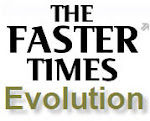These and other findings provide clues as to the niche plasticity and the ability of mammals to adapt to fluctuating climates.

'Knowing what the extinct bears ate is of utmost relevance to finding out about the evolution of carnivore niches in the Pleistocene when climatic conditions were changing', explains Borja Figueirido, lead author of the study and researcher for the Ecology and Geology Department of the Faculty of Sciences at the University of Málaga.

Figure Above: Landmarks used for describing cranial and mandibular shape. Cranium: (1) most postero-dorsal border of the canine alveolus, (2) most antero-dorsal border of the canine alveolus, (3) most antero-dorsal border of the I3, (4) most anterior edge of the nasal bones, (5) dorsal outline directly superior to post-orbital process, (6) dorsal outline directly superior to the end of the zygomatic arch, (7) most postero-ventral point of the occipital crest, (8) intersection between the occipital condyle and the occiput, (9) intersection between the occipital condyle and the paraoccipital process, (10) ventral tip of postglenoid process, (11) posterior edge of the upper tooth row, (12) point between the upper carnassial and the first upper molar, (13) anterior edge of the upper tooth row, (14) postero-dorsal border of the zygomatic arch, (15) dorsal tip of the frontal process of the zygomatic arch, (16) orbit midheigth, (17) ventral tip of the post-orbital process, (18) ventral intersection between the zygomatic arch and the axilla.Mandible: (1) antero-dorsal border of the incisive alveolus, (2) postero-dorsal border of the canine alveolus, (3) intersection between the trigonid/talonid notch of the lower carnassial and the dorsal border of the alveolus of this tooth, (4) posterior edge of the lower tooth row, (5) posterior edge of the coronoid process, (6) most posterior edge of the articular surface condyle, (7) tip of angular process, (8) ventral outline below the mesial end of the tooth row, (9) ventral outline below the trigonid/talonid notch of the lower carnassial, (10) most ventral point of the symphyseal region. Scale bar equals 5 cm. Deviations of the specimens analyzed from the consensus configuration of landmarks are shown.
Read the research article published in the Journal of Zoology - HERE.
Figueirido, B., Palmqvist, P., & Pérez-Claros, J. (2009). Ecomorphological correlates of craniodental variation in bears and paleobiological implications for extinct taxa: an approach based on geometric morphometrics Journal of Zoology, 277 (1), 70-80 DOI: 10.1111/j.1469-7998.2008.00511.x





























No comments:
Post a Comment